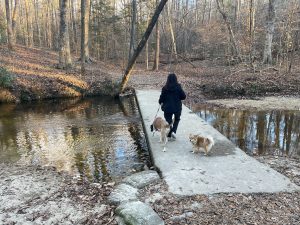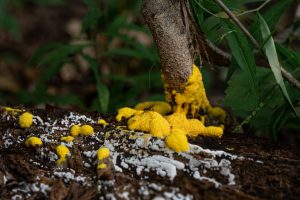
The world can feel overwhelming right now, with the headlines full of foreign wars, protests, and political mayhem. It’s hard for most people to just get through their daily lives with work, school, kids, death of loved ones and the inevitable drama of the human condition. We forget that we need to take a break from it all, but when we do most people find that quick release with a dive in their social media and an alcoholic beverage, though there’s a lot more available to us in Richmond. Consider taking a walk outside and allow nature to bring you some free calming simplicity.
When I need to get away for a few hours, I’ve found a few places to visit in the city where I don’t have to go very far to enjoy being under the trees for a moment. My favorite spot is going down to the James River, whether it’s at a crowded location like Belle Isle or a secluded random spot I’ve found off the beaten trail. There’s tons of places to sit on a rock, stick your feet in the water and just zone out under the trees. I’ll sometimes take my dog and a cold beverage and not have any other plan except to relax.
If I have a few hours to get away on the weekend, I’ll grab my canoe and head down to Pocahontas State Park. The place is huge! It’s great for all means of outside activities, whether you want to have a picnic, go for a hike or get on the calm waters of the reservoir. There are rental water craft available, but please check the website for further details. I don’t take advantage of this wild, wooded wonderland enough and it’s less than an hour drive for most Richmonders.
Getting a break does not always require more than just a momentary escape under a nearby tree. Since I moved from the constant din of the middle of the city, to the quiet Southside neighborhood of West Swansboro, it feels like a retreat. I now have a small backyard that I can retreat to, taking a break from the stressors of my life to sit under my willow oak tree, swinging in the hammock while my dogs run around. It’s a quick solace in the middle of the day that I need, that we all need. It can do more for your mental health and overall well being than you’d realize; so just go outside!

































































































